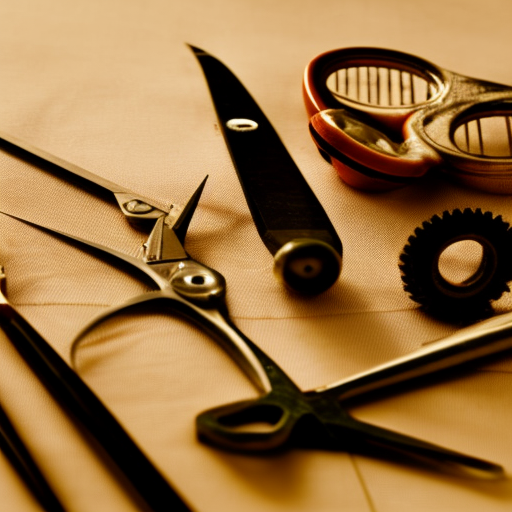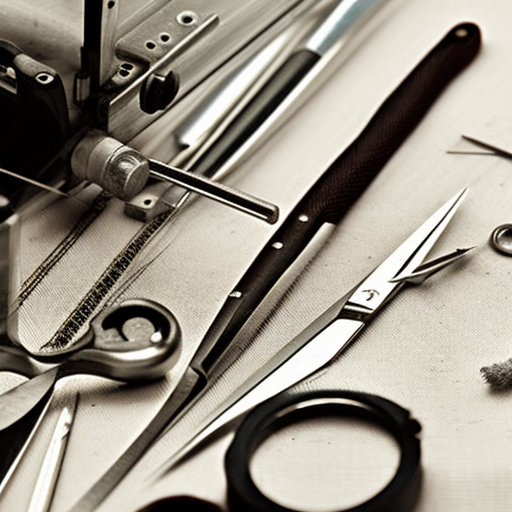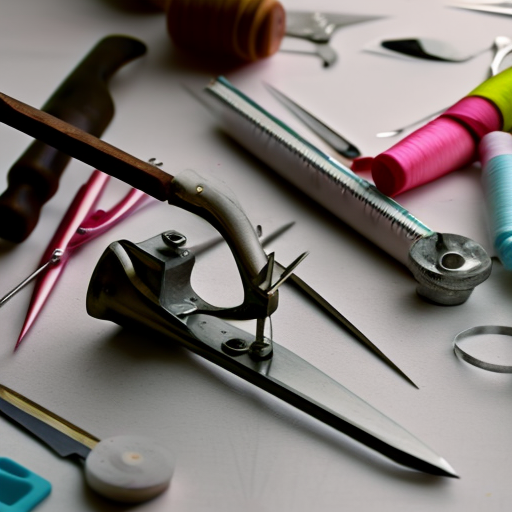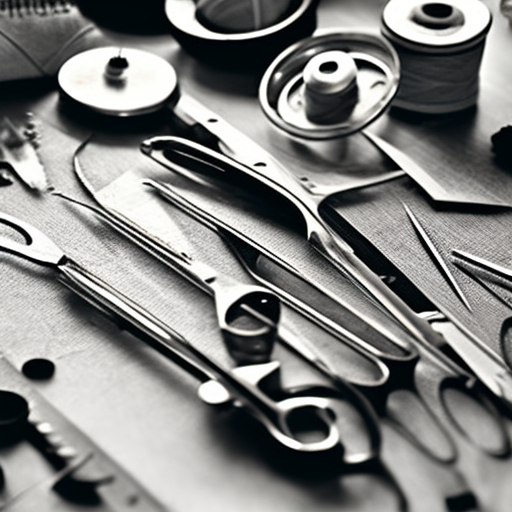Sewing is a practical, creative and rewarding skill that has been passed down for generations. From mass producing clothing to creating unique pieces, sewing is a versatile craft that offers endless possibilities. And like any other skill, having the right tools is essential to achieving success.
Basic Sewing Tools
The first step in mastering sewing is understanding the basic tools needed to get started. These tools are easily available and can be found in any craft or fabric store. Here are the essentials:
- Needles: Needles are the most fundamental tool in sewing. They come in various sizes, each serving a different purpose. Hand sewing needles are used for basic stitching, while machine needles are specifically designed for use with sewing machines.
- Thread: Thread is the backbone of every sewing project. It is used to connect fabric pieces together and comes in a wide variety of colors and thicknesses. Polyester, cotton and silk threads are the most commonly used types of thread.
- Pins: Pins are used to hold fabric pieces together while sewing. They come in different lengths and thicknesses and are used to guide fabric through the sewing machine. Sharp pins make sewing easier and more accurate, so it’s important to invest in high-quality pins.
- Scissors: Scissors are essential for cutting fabric, thread, and other sewing materials. Fabric shears are designed specifically for cutting fabric, while thread scissors have a finer point for more precise cutting.
Advanced Sewing Tools
As you progress in your sewing journey, you may find yourself wanting to create more intricate pieces. These advanced tools will help you achieve more professional results:
- Sewing Machine: A sewing machine is a must-have for those who want to take their sewing skills to the next level. It speeds up the sewing process and allows for more precise stitching. When buying a sewing machine, make sure to choose one that suits your sewing needs and experience level.
- Tape Measure: A tape measure is used to take accurate body measurements for fitting clothes as well as measuring fabric. It is an essential tool for tailoring and pattern making.
- Dressmaker’s Carbon Paper: This special paper is used to transfer pattern markings onto fabric. It comes in a variety of colors and can be used multiple times.
- Seam Ripper: Even the most skilled sewers make mistakes. A seam ripper is a small tool used to remove stitches and is essential for fixing any sewing errors.
Sewing Tools Classification
Sewing tools can be classified into four categories based on their function.
- Measuring Tools: These tools are used for measuring and marking fabric pieces. They include tape measures, rulers, French curves, and dressmaker’s carbon paper.
- Cutting Tools: These tools are used for cutting fabric, thread, and other materials. Scissors, rotary cutters, and pinking shears fall into this category.
- Joining Tools: Joining tools are used to connect fabric pieces together. They include needles, pins, sewing machines, and thread.
- Finishing Tools: Finishing tools are used to give the final touches to a sewing project. They include iron and ironing board, seam ripper, and hand needles for finishing touches.
It is important to have a variety of sewing tools in your arsenal to handle different projects. Keeping your tools organized and in good condition will make sewing a more enjoyable experience.
In Conclusion
Sewing is an art that requires patience, practice, and the right tools. Investing in high-quality sewing tools can make a huge difference in the outcome of your projects. Whether you are a beginner or an experienced seamstress, having the right tools will set you up for success in all your sewing endeavors.





Great post, so helpful!
Rebecca Anderson: Learning so much from this article.
#WonderfulPost! As someone who has never tried sewing, this is a great start to begin to understand the different tools, what they do, and how to classify them. There is so much knowledge here to gain and it’s incredibly helpful!
Fantastic read! So informative.